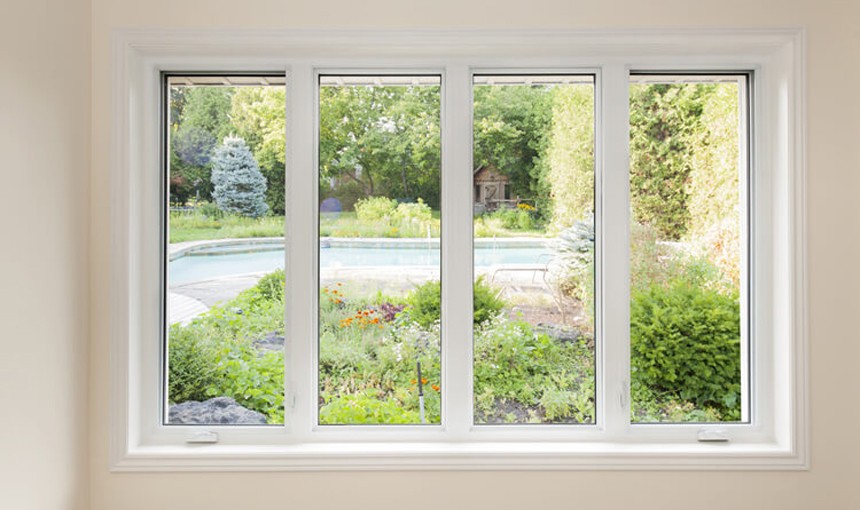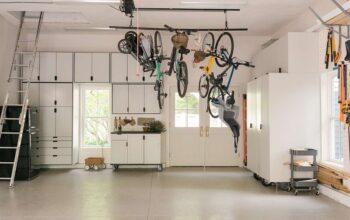When it comes to home design, windows play a vital role in defining aesthetics, energy performance, and comfort. Among the many types available today, the fixed-frame window (fastkarmsvindue) stands out as a modern, sleek, and highly efficient option. Known for its minimalist appeal and airtight design, this type of window has become a preferred choice for homeowners, architects, and commercial builders alike.
What Is a Fixed-Frame Window?
A fastkarmsvindue, also known as a picture window, is a non-operable window that doesn’t open or close. It’s designed primarily for providing unobstructed views and maximizing natural light. Unlike sliding or casement windows, fixed-frame windows are sealed permanently within their frame, offering superior insulation and airtight performance.
They are ideal for spaces where ventilation isn’t necessary but natural illumination and aesthetics are desired — such as stairwells, living rooms, hallways, or offices overlooking scenic views.
Key Features of Fixed-Frame Windows
1. Seamless Aesthetics
The most striking feature of fixed-frame windows is their clean, modern appearance. Since there are no moving parts, handles, or hinges, the window maintains a minimalist design that complements both contemporary and traditional architecture.
2. Energy Efficiency
Because fixed-frame windows are completely sealed, they minimize air leaks — a major cause of energy loss in buildings. With the addition of double or triple glazing, low-emissivity (Low-E) glass, and thermal breaks, these windows can significantly improve a building’s energy performance.
3. Durability and Low Maintenance
With no moving components, fixed windows experience less wear and tear over time. They require minimal maintenance compared to operable alternatives, making them an ideal long-term investment for homeowners who value durability.
4. Uninterrupted Views
Fixed-frame windows are often used to frame outdoor landscapes or city skylines. They act as a large “picture frame,” bringing the outside beauty indoors — which is why they are commonly found in high-end residential and commercial projects.
Benefits of Installing Fixed-Frame Windows
Installing fixed-frame windows brings numerous benefits beyond just aesthetics. Here are some of the most notable advantages:
Enhanced Thermal Insulation
Fixed windows are airtight and prevent drafts, helping to maintain stable indoor temperatures. When combined with insulated glass units (IGUs), they can significantly reduce heating and cooling costs.
Cost-Effective Option
Compared to operable windows, fixed-frame styles often cost less due to their simpler construction. They also save money over time through lower maintenance and better energy efficiency.
Increased Security
Since they don’t open, fixed-frame windows provide an added layer of security. There’s no risk of accidental openings or forced entries through the frame.
Natural Light Boost
Large fixed windows allow maximum daylight penetration, brightening up interiors and creating a more spacious, uplifting environment.
Where to Use Fixed-Frame Windows
Living Rooms and Lounges
A fixed-frame window in the living room offers a panoramic view while filling the space with natural light — perfect for creating an inviting atmosphere.
Staircases and Hallways
These areas often benefit from additional daylight without requiring ventilation. Fixed windows add brightness and architectural interest.
Offices and Commercial Buildings
Businesses use fixed-frame windows to maintain a sleek, professional appearance and reduce energy costs through improved insulation.
Modern Homes with Minimalist Designs
Architects frequently use fixed windows in contemporary builds to emphasize clean lines and open sightlines, blending seamlessly with minimalist design principles.
Fixed-Frame vs. Operable Windows: Which Should You Choose?
When choosing between fixed-frame and operable windows, it’s important to consider the function of the space.
| Feature | Fixed-Frame Window | Operable Window |
| Ventilation | ❌ No | ✅ Yes |
| Energy Efficiency | ✅ High | ⚪ Moderate |
| Maintenance | ✅ Low | ⚪ Medium to High |
| Cost | ✅ Affordable | ⚪ Higher |
| Design Flexibility | ✅ Excellent | ⚪ Good |
In essence, fixed-frame windows are perfect for areas where airflow isn’t needed but natural light and energy savings are priorities. However, they can be paired with operable windows nearby to achieve both ventilation and aesthetics.
Materials Used in Fixed-Frame Windows
The choice of material impacts both the performance and appearance of your windows. Common materials include:
- Aluminum: Lightweight, strong, and suitable for modern architecture. Ideal for large glass panels.
- uPVC (Vinyl): Offers excellent insulation, low maintenance, and cost-effectiveness.
- Wood: Aesthetic and natural, often used in traditional or rustic homes. Requires periodic maintenance.
- Fiberglass: Combines durability with energy efficiency and a sleek finish.
Each material has its pros and cons, but all can be customized with different glass options and finishes to suit your design vision.
Design Flexibility and Customization Options
Fixed-frame windows can be customized in countless ways:
- Shapes: Rectangular, circular, triangular, or custom geometric forms.
- Sizes: From small accent windows to expansive wall-to-wall glass panels.
- Glass Types: Tinted, frosted, laminated, or low-E coated for energy control and privacy.
- Frames: Available in multiple colors, textures, and finishes to complement any décor.
This design flexibility makes them a favorite among architects aiming to balance function, performance, and aesthetics.
Maintenance Tips for Fixed-Frame Windows
Maintaining fixed-frame windows is straightforward. Here are a few tips to ensure longevity:
- Regular Cleaning: Use mild detergent and soft cloths to avoid scratching the glass.
- Inspect Seals and Frames: Check for cracks or worn-out sealant annually.
- Avoid Harsh Chemicals: These can damage coatings and frame finishes.
- Clean Drainage Channels: If applicable, ensure no water accumulation occurs near the frame.
With minimal upkeep, fixed-frame windows can maintain their appearance and performance for decades.
Environmental Impact and Sustainability
Fixed-frame windows contribute positively to sustainability goals by reducing energy consumption. Their airtight seal minimizes heat loss during winter and heat gain in summer, cutting down on HVAC use. Using recyclable materials like aluminum or energy-efficient glazing further enhances their eco-friendly profile.
FAQs About Fixed-Frame Windows
Q1. Do fixed-frame windows open?
No, they are non-operable windows designed solely for lighting and aesthetic purposes.
Q2. Are fixed-frame windows energy-efficient?
Yes. Their sealed design eliminates air leakage, making them one of the most energy-efficient window types.
Q3. Can I install fixed-frame windows in bedrooms?
While possible, it’s recommended to include at least one operable window in bedrooms for ventilation and safety.
Q4. Are they cheaper than other window types?
Typically, yes. Fixed windows cost less to manufacture and install than operable models.
Q5. How long do fixed-frame windows last?
Depending on materials and maintenance, they can last 20–40 years or longer.
Final Words
A fixed-frame window is more than just a glass panel — it’s a statement of modern design, energy efficiency, and long-term durability. Whether you’re constructing a new home, renovating a commercial space, or simply upgrading your existing windows, this type of window offers the perfect combination of beauty and practicality.
With clean lines, exceptional insulation, and low maintenance, fixed-frame windows embody the essence of contemporary architecture — proving that sometimes, simplicity is the ultimate sophistication.




